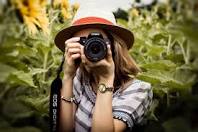Use the Exposure Triangle to understand exposure and get out of the Auto mode
Get out of the Auto mode using the exposure triangle, which demonstrates in simple terms how the individual aspects of exposure (aperture, shutter speed and ISO) affect the final exposure of the photo.














